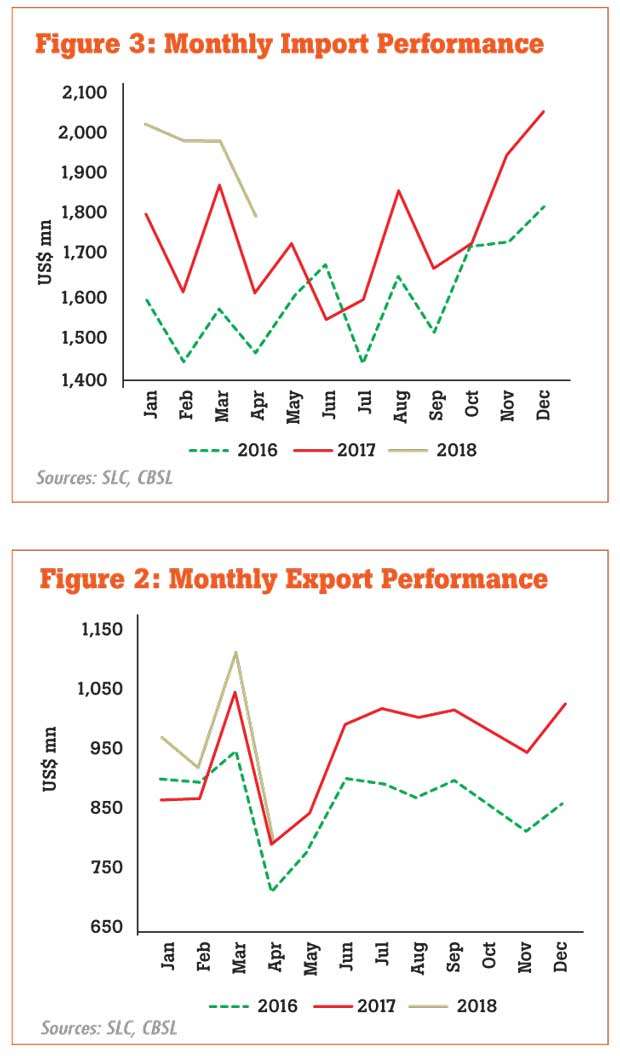02 Jul 2018 - {{hitsCtrl.values.hits}}

Sri Lanka’s merchandise trade deficit worsened during April as the consumption-hungry nation imported record-high consumption goods and personal vehicles, while exports languished.
Sri Lanka imported merchandise goods expensing US $ 1.8 billion during April alone, up 12 percent from a year ago.
Out of the total import bill, close to 10 percent or US $ 160 million was expensed to import personal vehicles, mainly with small engine sizes. Vehicle imports have tripled from its US $ 56 million recorded in the same month, last year.
Sri Lanka imported 40, 428 motor vehicles in April, out of which 5,190 units were motor cars mostly consisting of small cars with 600 cc engines.
Meanwhile for the first four months, the vehicle imports more than doubled to US $ 517 million from US $ 248 million during the same period, last year.
Unless the treasury brings in additional taxes and financing restrictions via the monetary board on vehicle imports, the rapid increase in motor vehicle imports will soon explode with irreversible spillover effects already seen in all facets of the society let alone the economy.
Meanwhile, Sri Lanka spent US$ 327 million on fuel in April, largely unchanged from a year ago, due to reduced crude and coal imports. But the oil bill of the first four months rose by 16 percent year-on-year (YoY) to US $ 1.4 billion.
Meanwhile, Sri Lanka’s exports, which are lacking vigour, remained at the same level at US $ 795 million during April as textile and garment exports lost earnings from a year ago.
During April, export earnings from textiles and garments—Sri Lanka’s largest merchandise export— dropped by 3.4 percent YoY to US $ 339 million, notably due to the decline in garments exports to the United States and other traditional markets.
“Exports to the EU market showed a marginal growth,” the Central Bank said.
For the first four months, textile and garment exports rose by only 2.5 percent YoY to US$ 2.5 billion.
This is after one year since Sri Lanka being re-qualified for the European Union’s Generalized System of Preferences Plus (GSP) concession. Meanwhile, during the first four months, Sri Lanka imported merchandise goods worth of US $ 7.8 billion, up 13 percent YoY and exported half of what it imported or US $ 3.8 billion, up 6.0 percent YoY. The trade gap in the first four months expanded to US$ 4.0 billion, up from US$ 3.3 billion in the same period last year.
While open and free trade has always proved to be a better policy compared to protectionism, Sri Lanka seems to be in need of a balanced policy, not letting ideologies to front run ground realities.
18 Nov 2024 5 minute ago
18 Nov 2024 9 minute ago
18 Nov 2024 16 minute ago
18 Nov 2024 1 hours ago
18 Nov 2024 2 hours ago